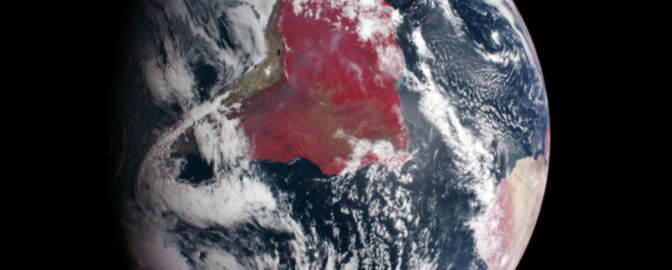Exploration on autopilot
The future of AI in space

Written by
Asa Stahl, PhD
Science Editor, The Planetary Society
March 10, 2025
The heroes of tomorrow's space missions may not be astronauts. If we ever do glimpse alien life or venture out to other stars, artificial intelligence (AI) could be the one in the captain's chair.
AI is set to transform the very nature of both robotic and crewed space missions. Though we are only just beginning to imagine the possibilities, humanity’s next steps in exploring the Cosmos could be impractical, or even impossible, without AI.
Human resources
Today, every active space mission relies on human control. Teams of experts on Earth often intervene to keep probes on track, whether planning a spacecraft's trajectory or picking a rover’s sample site. This means that the kinds of exploration demanding quick, complicated decisions tend to stay out of reach. No space agency has ever flown a drone through a Martian cave, for example, though it could tell us much about the planet’s past.
This human guidance comes at a cost. Over the course of the 2010s, NASA’s Science Mission Directorate spent $2.4 billion on mission operations alone. If this work had been streamlined by just 15% — say, by reducing the number of hours spent managing probes — the agency could have saved $360 million. That's enough to pay for another mission, like the recent Double Asteroid Redirection Test (DART), in full.
Better, faster, stronger
AI changes this equation.
When human control threatens to become too impractical or expensive, artificial intelligence can bridge the gap. AI will allow probes to plan out their activities, navigate complex surroundings, and both detect and adapt to onboard problems. Missions can lean on AI to become more efficient and, sometimes, to achieve entirely new feats.
Take NASA’s DART mission. In 2022, it used an onboard algorithm to guide itself to smash into the asteroid Dimorphos. But unlike previous missions, DART didn't just follow a set of prewritten rules to slightly adjust its trajectory. Its algorithm made its own decisions, commanding the spacecraft by itself for the mission’s entire final phase.
Mars exploration has benefited from machine intelligence, too. Starting with the Opportunity rover, every NASA rover on Mars has used a built-in system to examine its wide-field images and then automatically decide which spots to photograph in detail. The rovers get more photos for less work, which frees up their teams to focus on other tasks.
But there is much more AI could do for robotic exploration. While experts currently plan detailed schedules for Mars rovers almost daily, with greater onboard intelligence, future probes could instead draft their own plans based on overarching goals. In one recent test at a Marslike site, a rover with this sort of “smart” software was able to complete a science campaign a full 80% faster than one using traditional methods.
As it stands, spacecraft maneuvers like gravity assists and landings require extensive planning from ground control. Landing zones have to be scouted in advance, sometimes by entirely separate missions, and while rovers know to avoid some hazards, they are mostly limited to terrain that is nicely lit and easy to traverse.
Smarter robots could one day handle all these operations on their own. In simulations, AI-driven spacecraft have planned maneuvers involving aerobraking and gravity assists that minimized fuel and travel time. AI methods have also automatically classified how navigable terrain is, detected surface features like cave entrances, and constructed maps for rovers based on orbiter images.
"In one recent test at a Marslike site, a rover with this sort of ‘smart’ software was able to complete a science campaign a full 80% faster than one using traditional methods."
A more intelligent probe might not only understand its surroundings better, but also its own workings. Research shows that AI-driven techniques can improve how a spacecraft identifies and adapts to internal problems in real time, helping missions account for broken instruments and spot software malfunctions. If a wind sensor failed on NASA’s InSight Mars lander, for instance, scientists have shown they could use AI to lessen the impact on the mission's data.
I, spacecraft
Put this all together, and AI becomes perfect for self-reliant missions to unexplored worlds.
The next generation of robotic Moon rover, ENDURANCE-R, is a prime example. By relying on onboard intelligence, ENDURANCE-R would drive up to 2,000 kilometers (1,200 miles) in just three years, covering ground at over 50 times the rate of NASA’s latest Mars rover. Though the mission has yet to be confirmed, the National Academy of Sciences has recommended ENDURANCE-R to become the agency’s top priority within one of its lunar science programs.
Planetary defense could also draw on AI to go beyond missions like DART. By using AI to pilot spacecraft, missions could hover near asteroids for long enough to try out untested deflection methods, like ion beams or gravity tractors. And if a dangerous asteroid was ever on a collision course with Earth — with no time to send a scouting mission — AI's ability to help a spacecraft adapt to unknown worlds could make the difference in averting catastrophe.
The missions that stand to benefit most from AI, though, might be those searching for life on faraway worlds like Europa and Enceladus. When a probe's communication signals take around an hour to travel to Earth and back, self-reliance becomes a necessity. AI could play a special role in how missions navigate unexplored terrain on these worlds, too, as the interview later in this issue of The Planetary Report shows.
Getting instructions to a distant lander is only half the problem, though. The other half is getting data back. Downlink speeds from faraway missions are often slower than dial-up internet. In a single minute, with just one instrument, a Europa lander mission might collect 40 times more data than it could send back to Earth over its entire lifetime. Improvements to data compression and transmission aren't expected to solve this problem anytime soon, either.
This is why upcoming missions are going to use AI to summarize their measurements, then decide what gets sent back to scientists. The European Space Agency’s Rosalind Franklin rover will use AI while looking for organic compounds on Mars, while NASA’s Dragonfly mission will rely on similar technology as it explores Saturn’s moon Titan. Both missions are slated to launch in 2028. If either ends up finding something spectacular, AI will likely have seen it first and passed it along.

Don't say HAL
AI will make robots more capable, but it won't replace human crews. If anything, AI may be essential to expanding humanity’s presence farther from Earth. Space stations and crewed deep-space missions could use onboard intelligence to rely less on their faraway home planet.
AI has already acted as a personal assistant to astronauts aboard the International Space Station. A computer powered by IBM’s Watson AI has made the trip twice in the past few years, and another assistant, this one based on a large language model similar to ChatGPT, will soon be tested by ESA on Earth.
Update in progress...
There remains a lot to figure out before AI is commanding missions or helping out astronauts in deep space.
For one, AI methods can be hard to trust. Algorithms often function in ways that aren’t transparent, and since AIs are meant to respond to a huge variety of conditions, testing them is difficult. Unlike self-driving cars, though, an AI-enabled spacecraft can’t be crash-tested around a warehouse. Future systems will likely have to be tested almost entirely through computer simulations. While research shows that could be enough to prove AI systems are ready to fly, this part of the field is just getting started.
The biggest roadblock to adapting AI for space exploration may not be issues with the technology itself, but with how it fits into space agencies.
This is not new. In 1980, a panel of experts chaired by Planetary Society co-founder Carl Sagan published a report criticizing NASA’s attitude toward machine intelligence and robotics, calling it “conservative and unimaginative.” The panel argued that since computer science is so essential to space exploration, NASA should act as an incubator for it. Otherwise, the agency would have to wait for private companies to invent new technology first, then adapt it, rather than developing their own systems tailored to the needs of exploration.
Today, NASA is no AI incubator, but it’s also not stuck in the past. It also has a very different relationship with the private sector. In 2016, well before AI's recent jump in popularity, NASA launched an AI research partnership with Nvidia, Google Cloud, and other leading organizations. The agency has built AI methods into some recent missions and established its own chief AI officer in 2024.
Yet NASA and other space agencies have done little to more broadly apply AI to spacecraft operations. Some experts argue that agencies will have to change how they think about their missions, first. Spacecraft and instrument teams would have to work together more closely than they do now, agencies would have to invest in AI on more than a mission-by-mission basis, and officials would have to view AI as a way to improve a mission’s reliability, instead of as something that just adds risk.
As technology improves and science dares us to new feats of exploration, agencies will have more and more reason to make these kinds of changes. One day, with the right support, AI could help us know the Cosmos in a way we never have before.
Breakthrough research starts with YOU!
Your support will empower the next round of STEP grant winners. Make your gift today to fund tomorrow's promising science and technology projects.
DonateThe Planetary Report • March Equinox
Help advance space science and exploration! Become a member of The Planetary Society and you'll receive the full PDF and print versions of The Planetary Report.


 Explore Worlds
Explore Worlds Find Life
Find Life Defend Earth
Defend Earth



